Abstract
A mathematical model is developed to mimic the transmission dynamics of the measles virus in communities in the developing world with high population growth rates and high case fatality rates. The model is used to compare the impacts of different mass vaccination programmes upon morbidity and mortality arising from infection by measles virus. Analyses identify three conclusions of practical significance to the design of optimal vaccination programmes. First, there is no single optimum age at which to vaccinate children for all urban and rural communities in developing countries. For a given community the best age at which to vaccinate depends critically on the age distribution of cases of infection prior to the introduction of control measures. Second, numerical studies predict that the introduction of mass vaccination will induce a temporary phase of very low incidence of infection before the system settles to a new pattern of recurrent epidemics. Mass vaccination acts to lengthen the inter-epidemic period in the post-vaccination period when compared with that prevailing prior to control. Third, numerical simulations suggest that two-phase and two-stage vaccination programmes are of less benefit than one-stage programmes (achieving comparable coverage) aimed at young children. The paper ends with a discussion of the needs for: improved programmes of data collection; monitoring of the impact of current vaccination programmes; and the development of models that take account of viral transmission dynamics, host demography and economic factors.
Full text
PDF

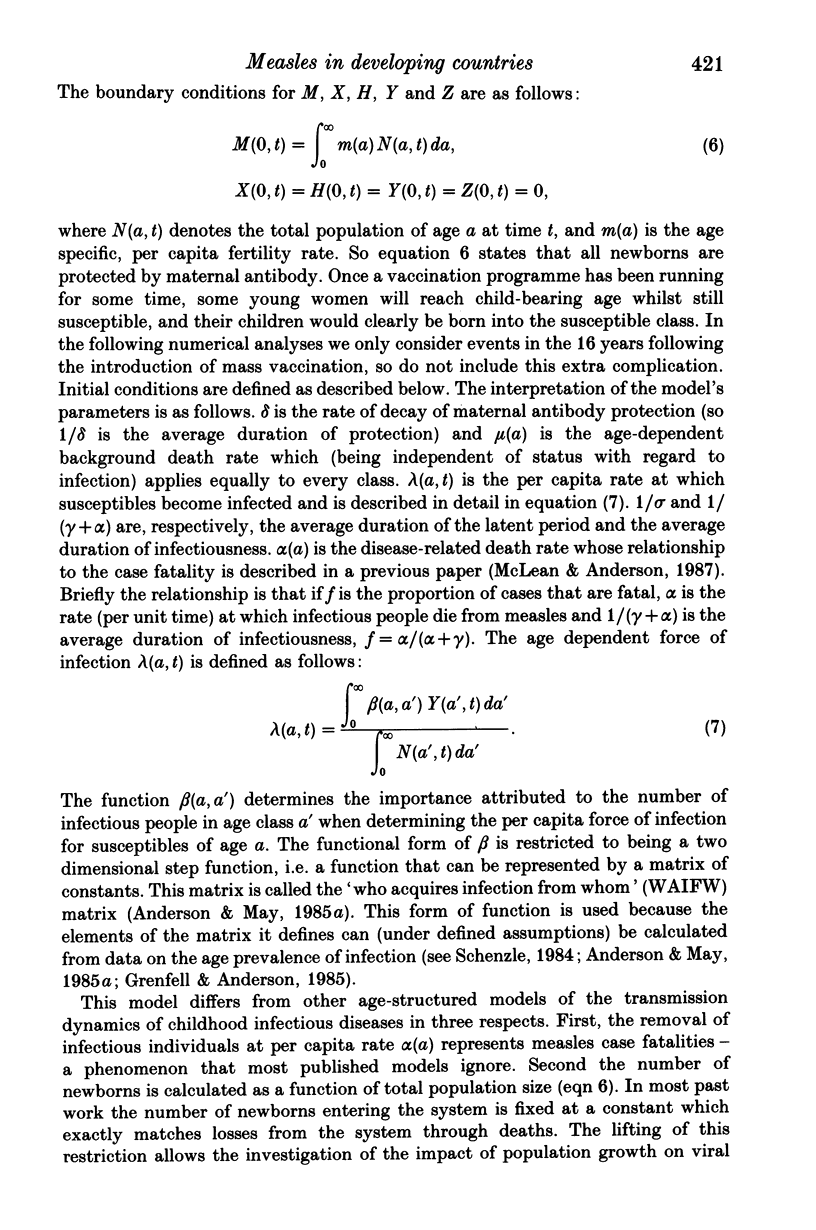

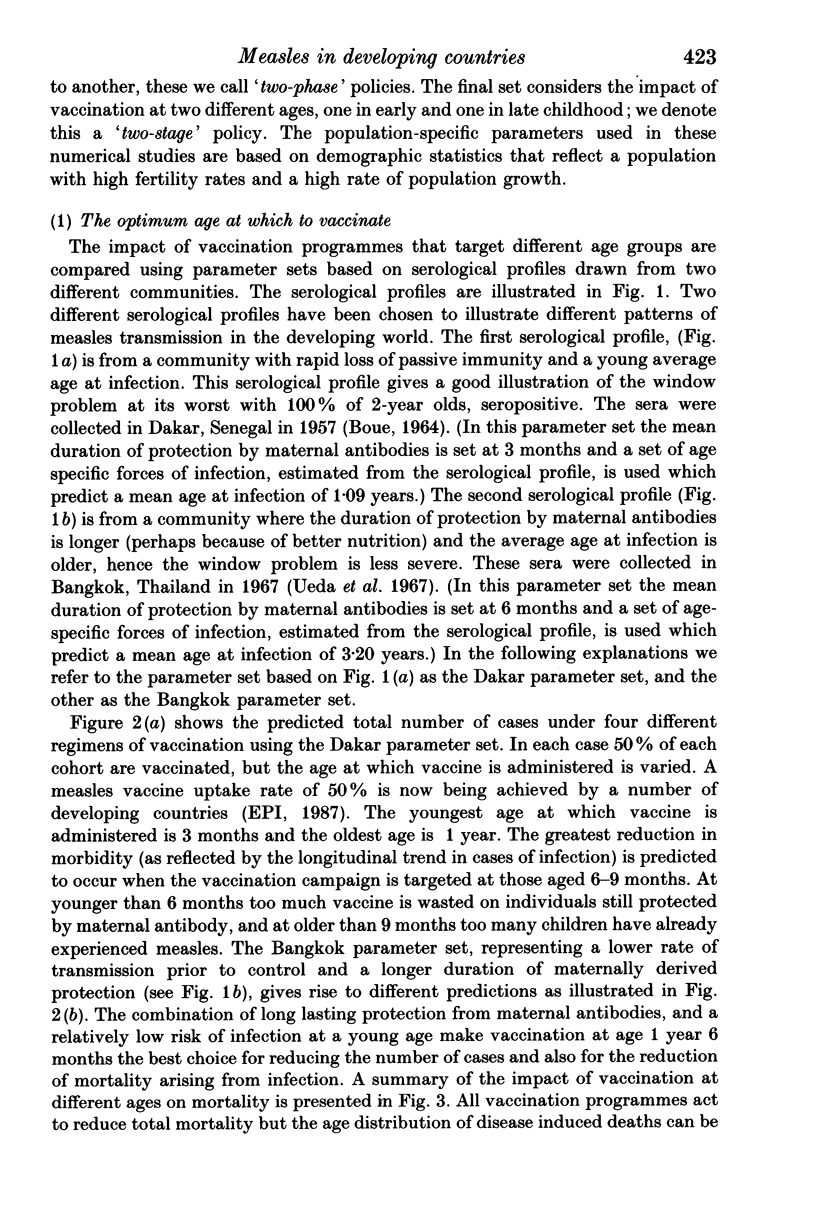
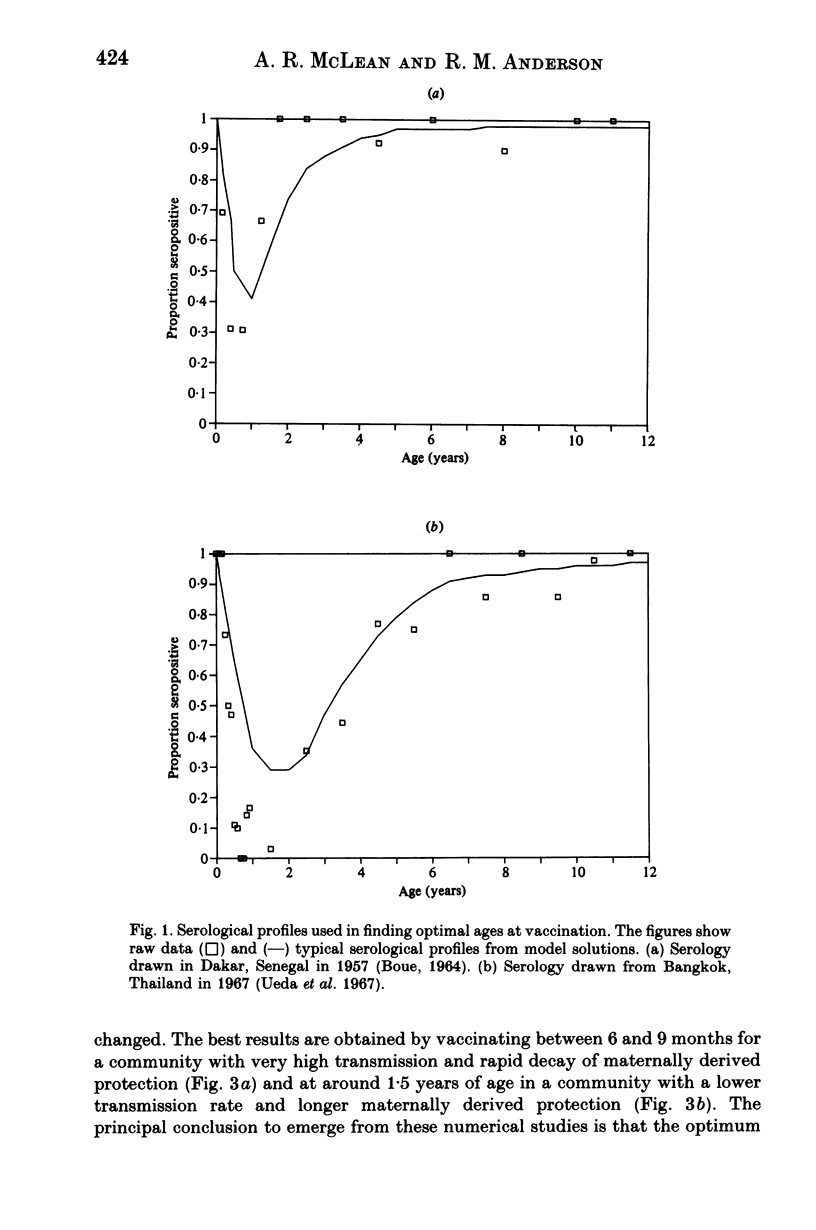


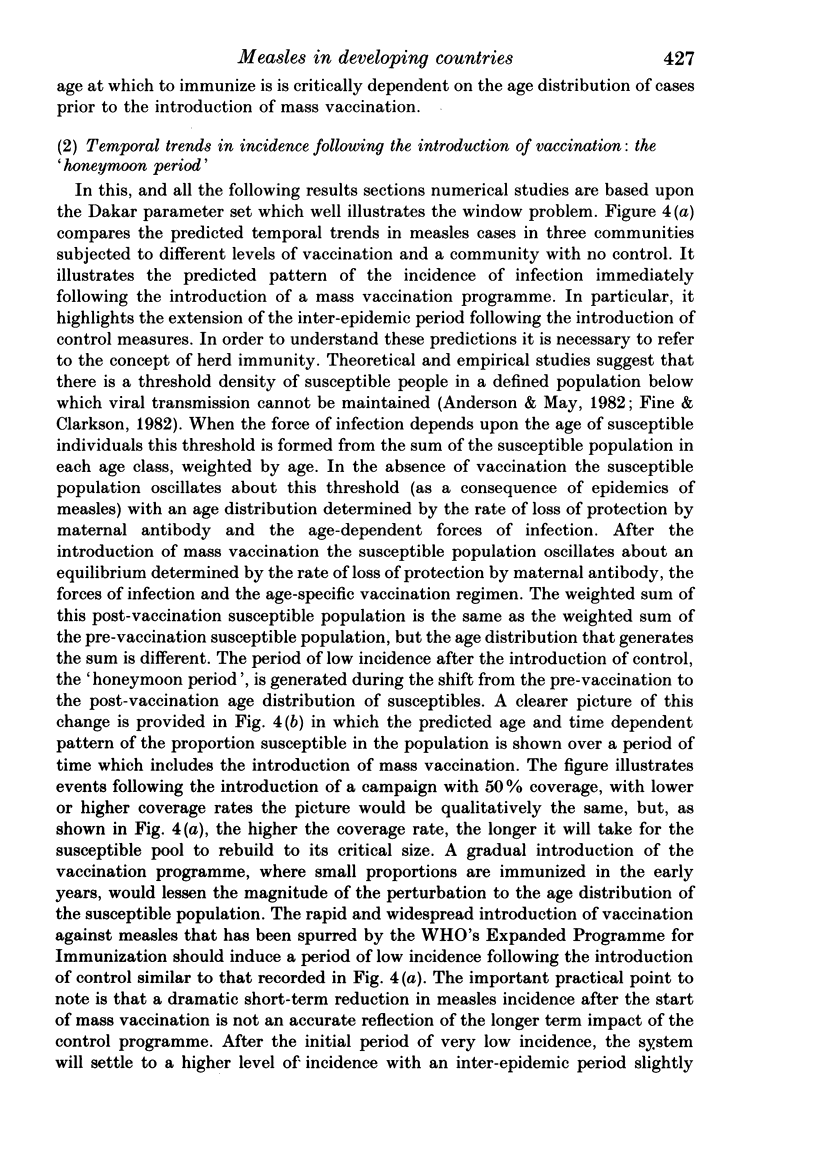
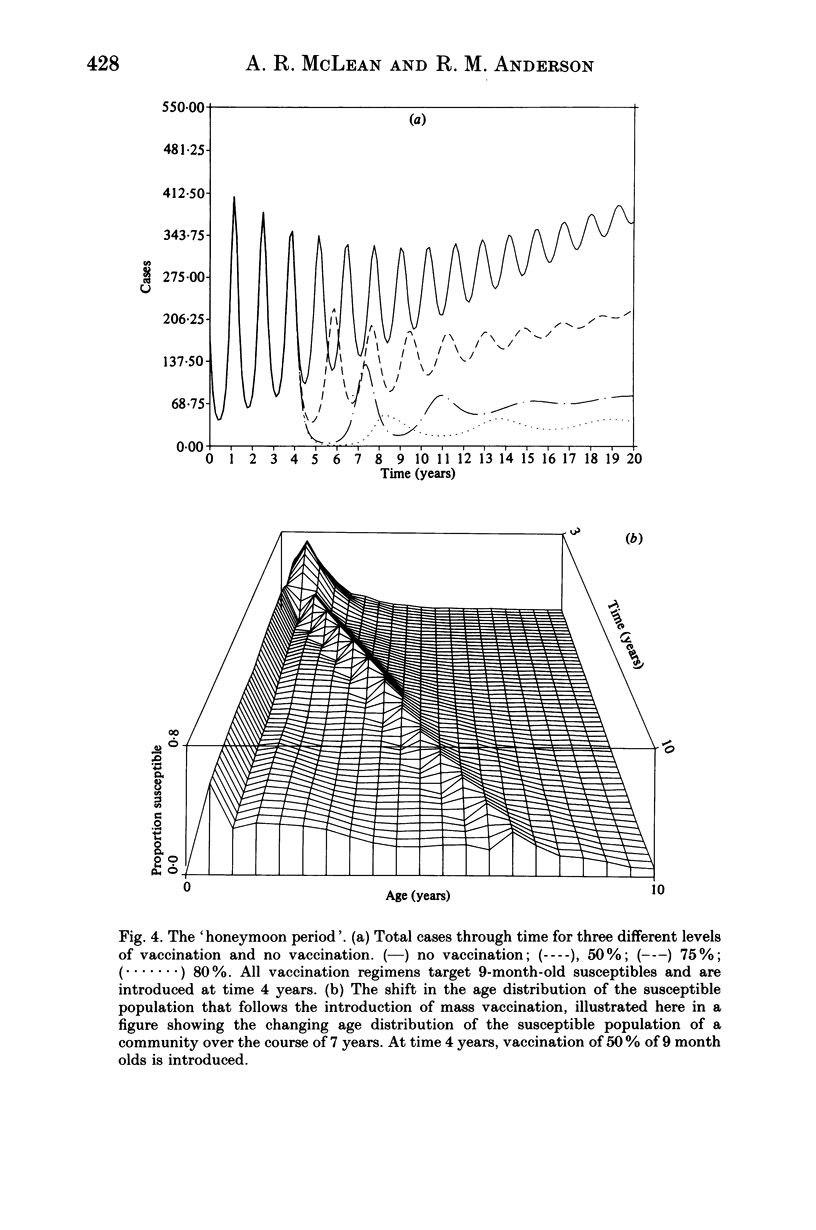
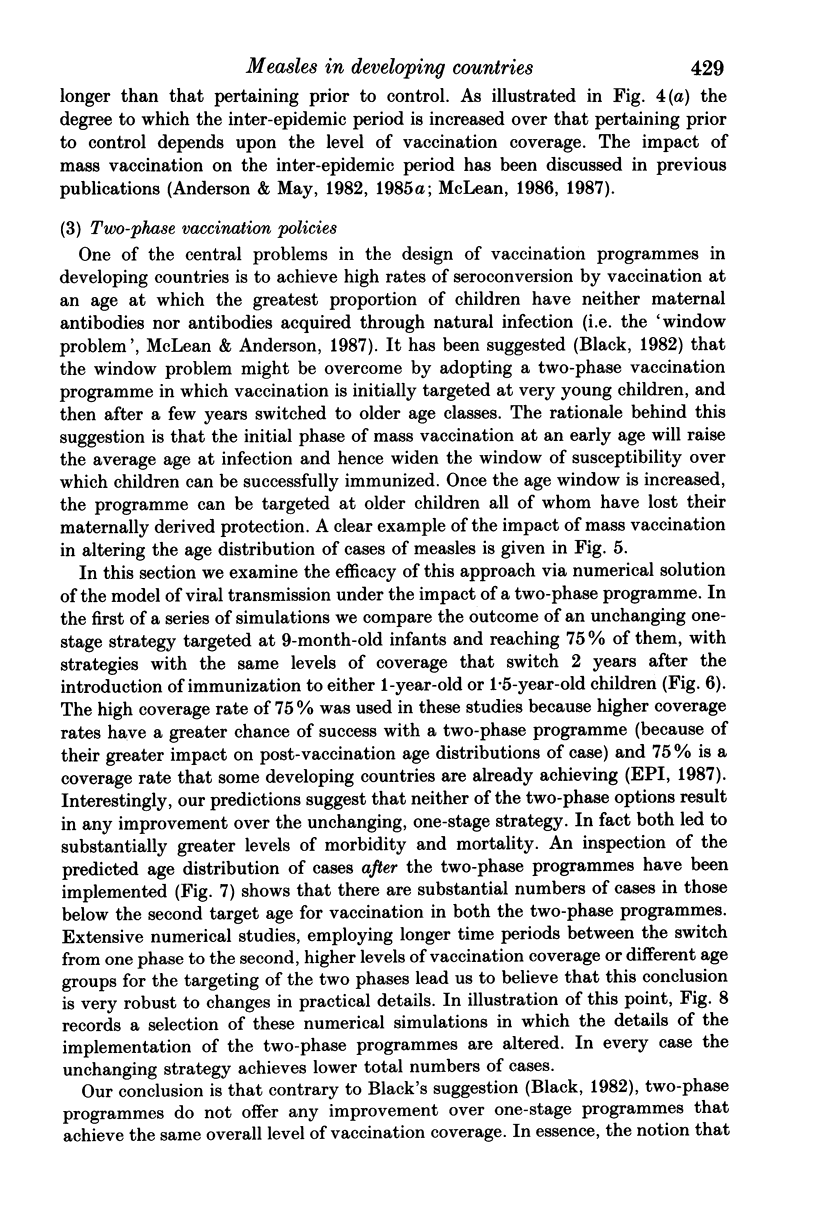
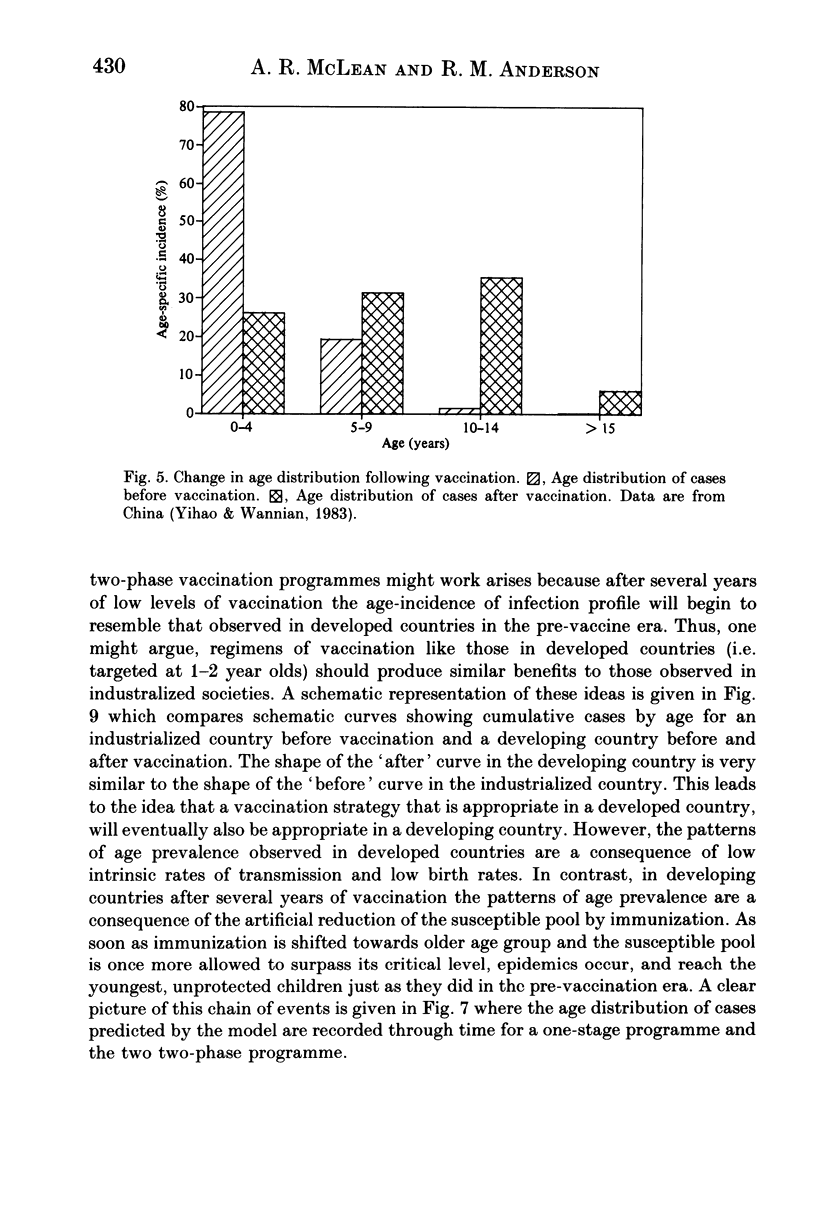

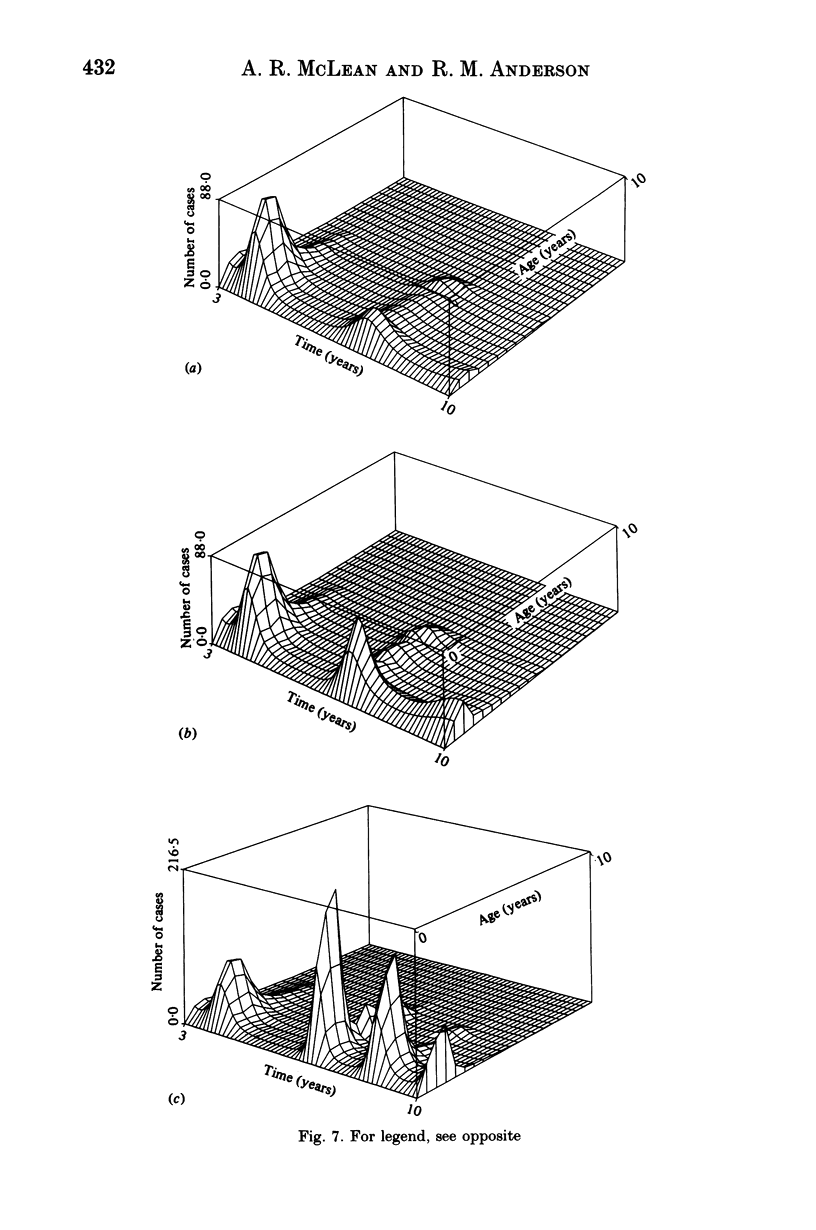
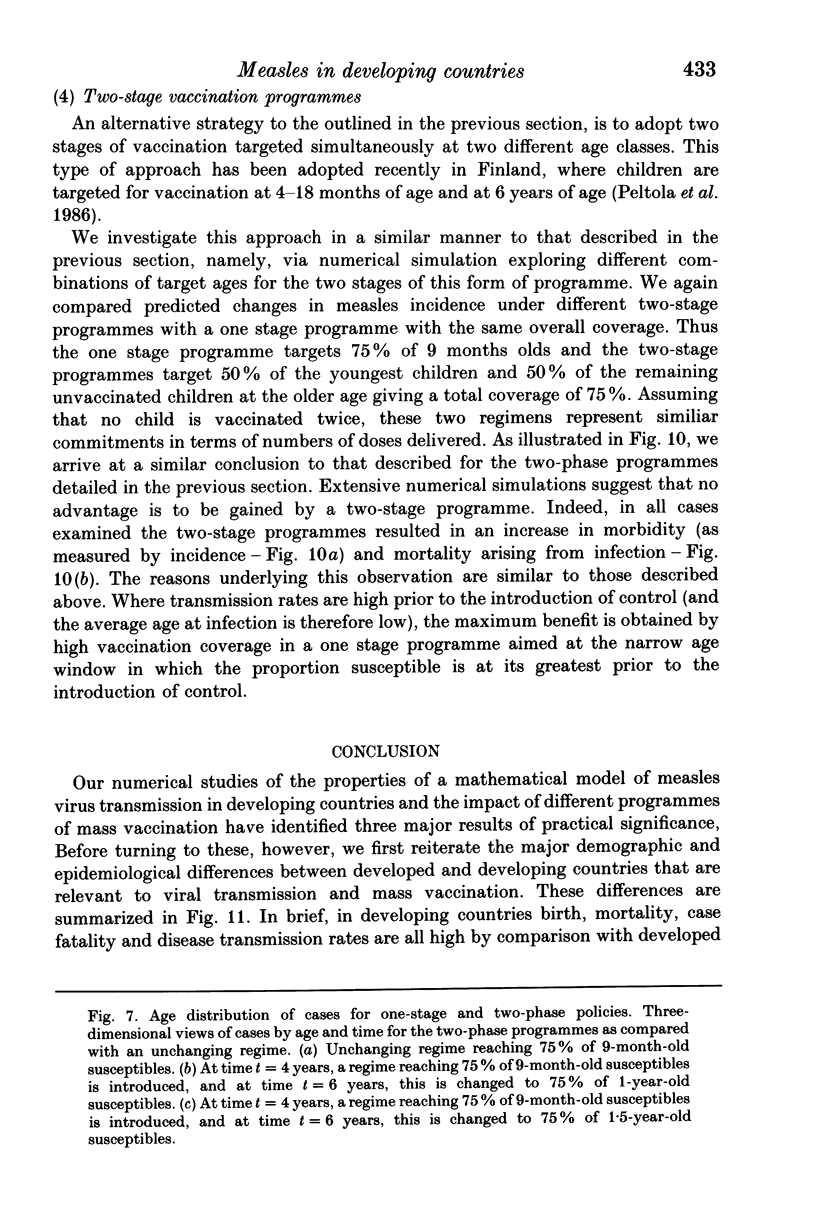

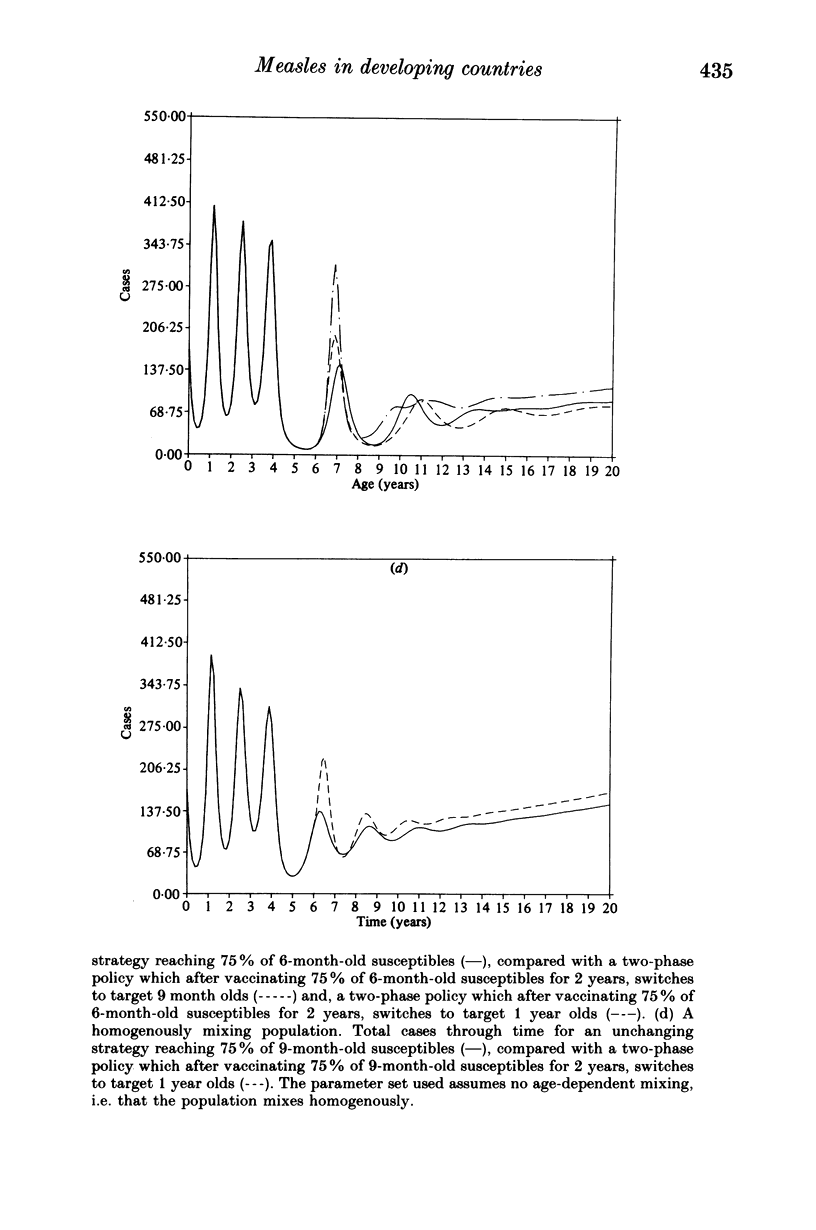
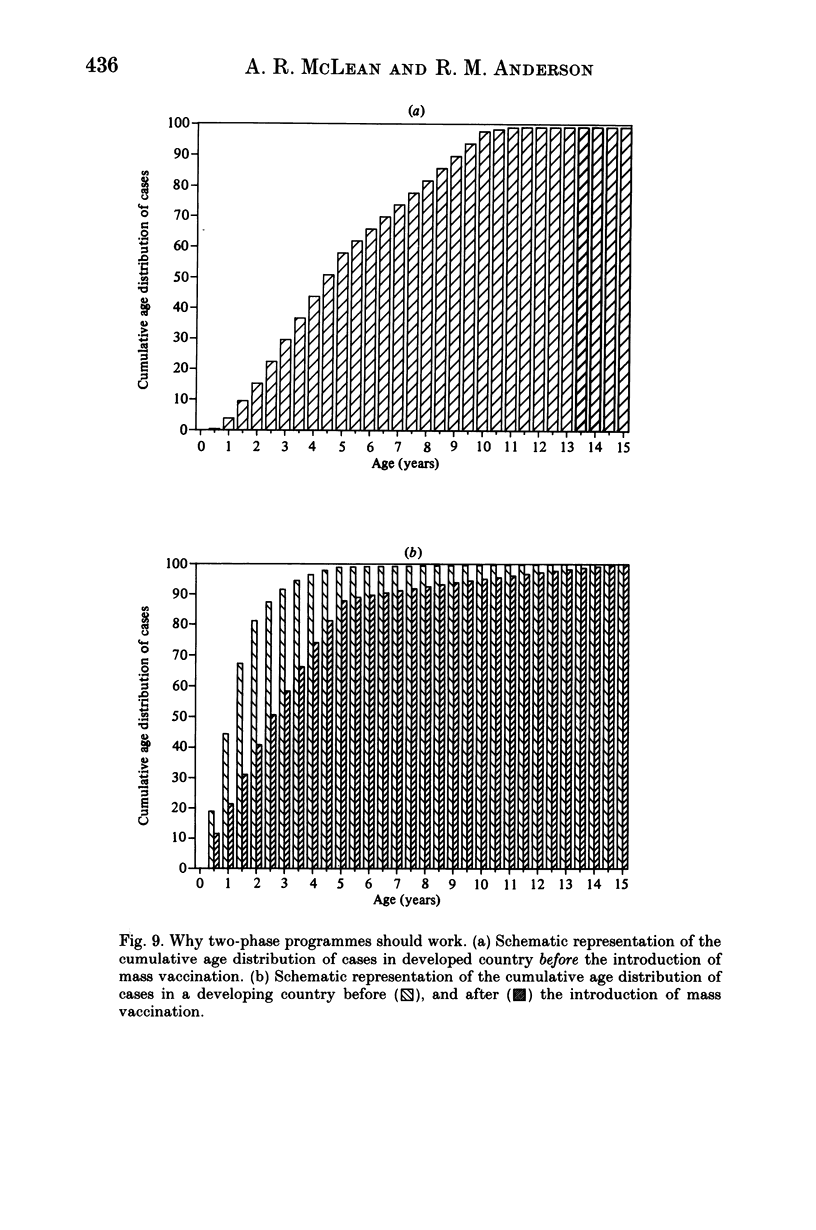
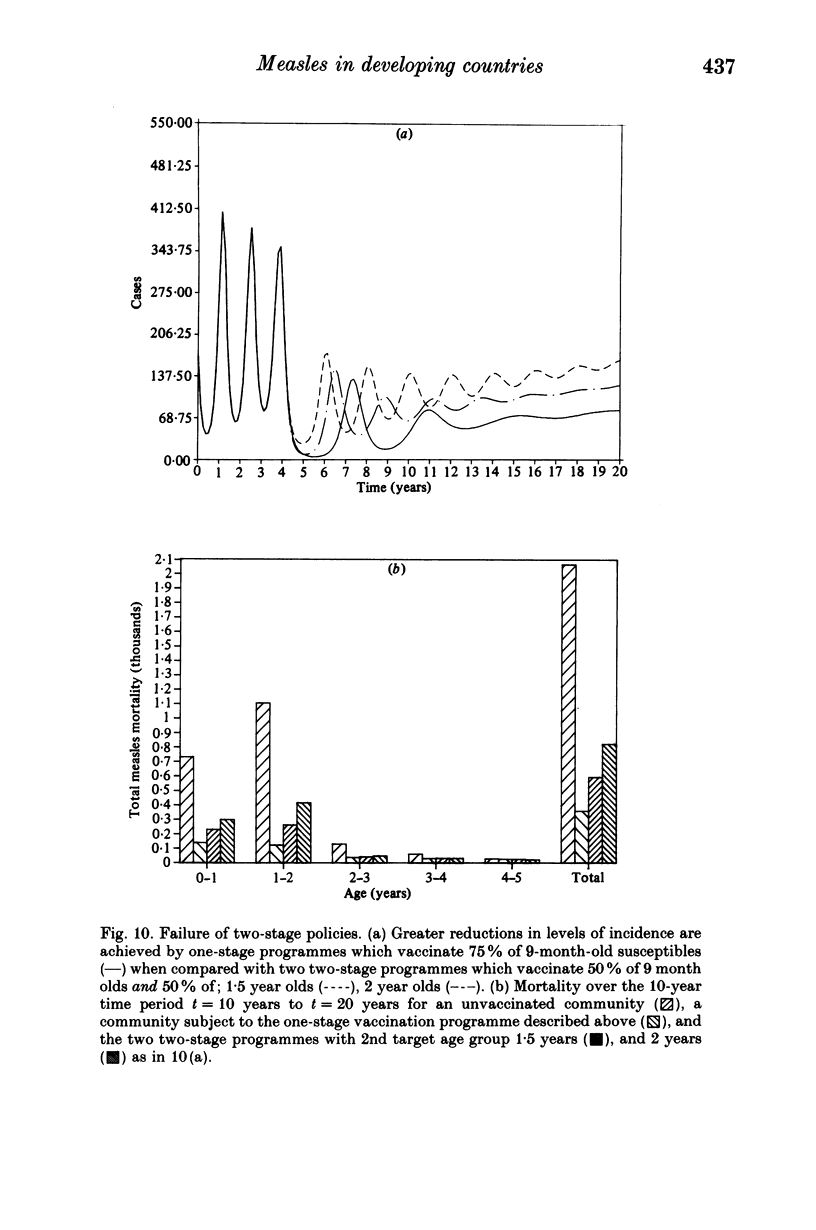
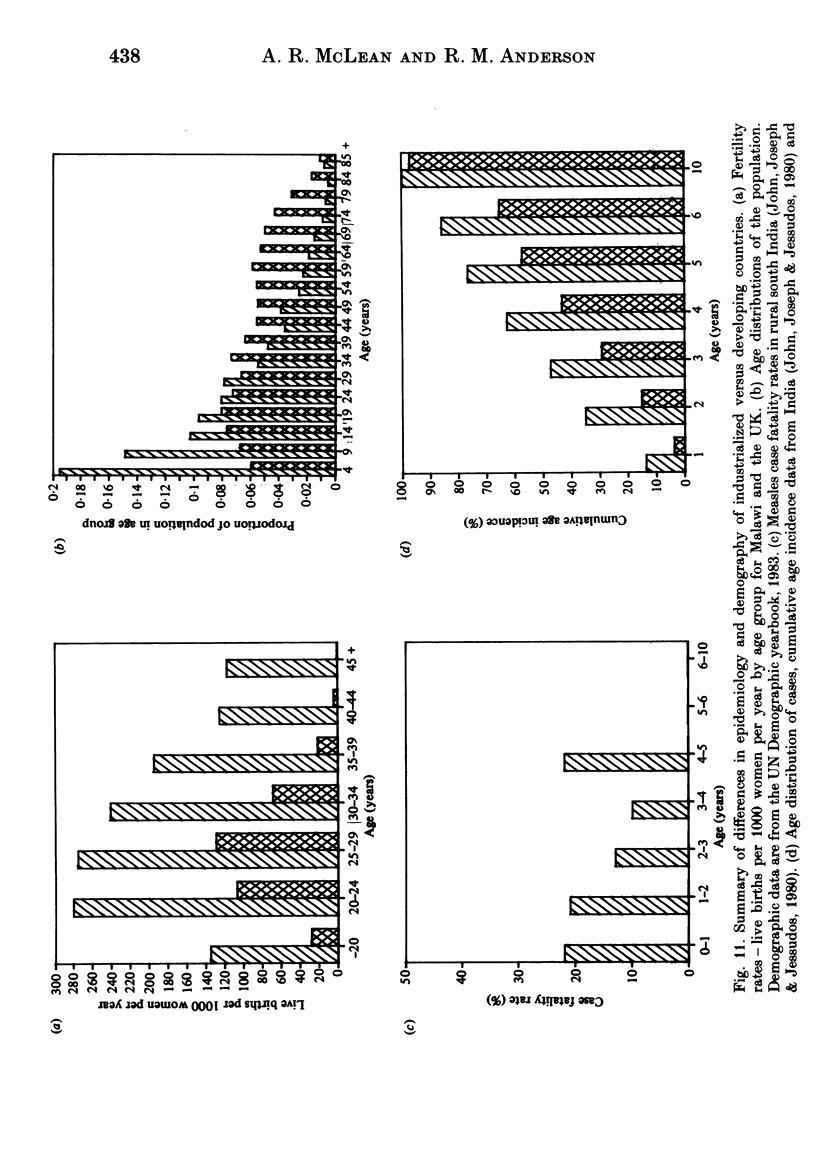
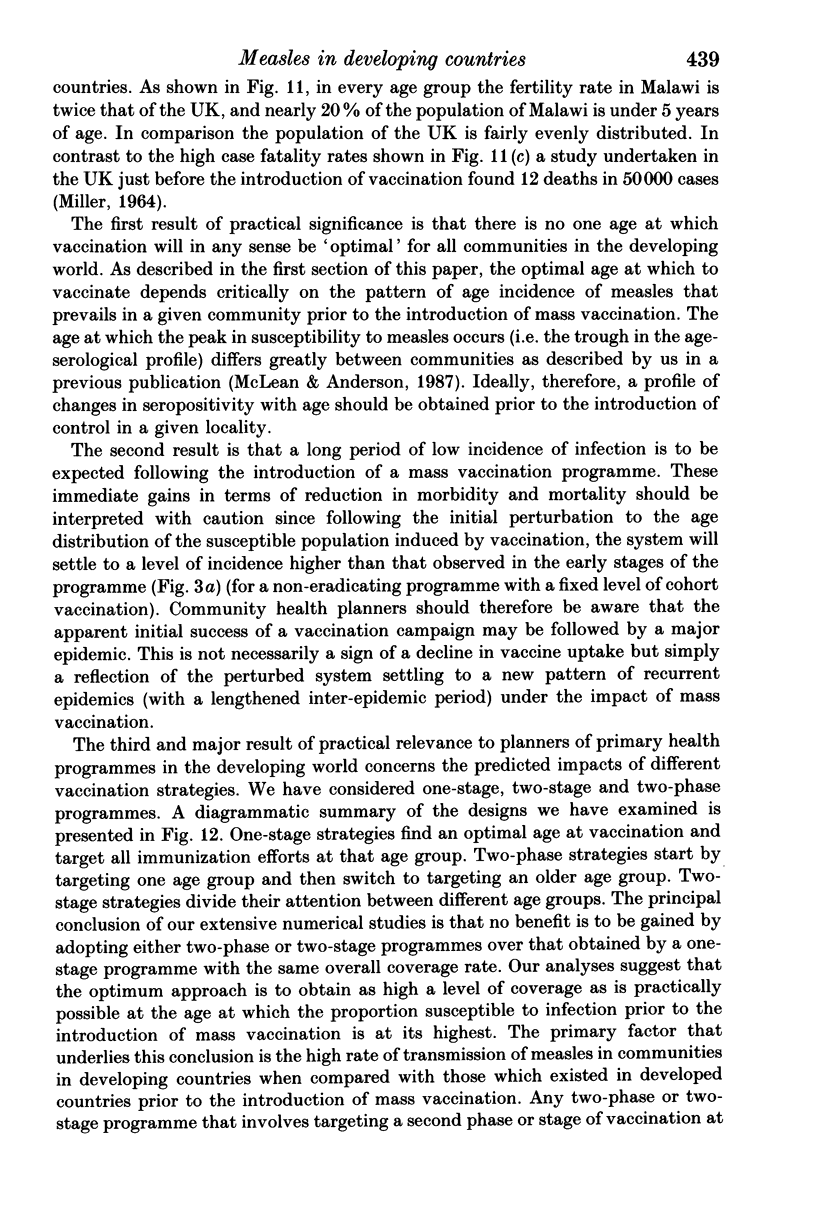
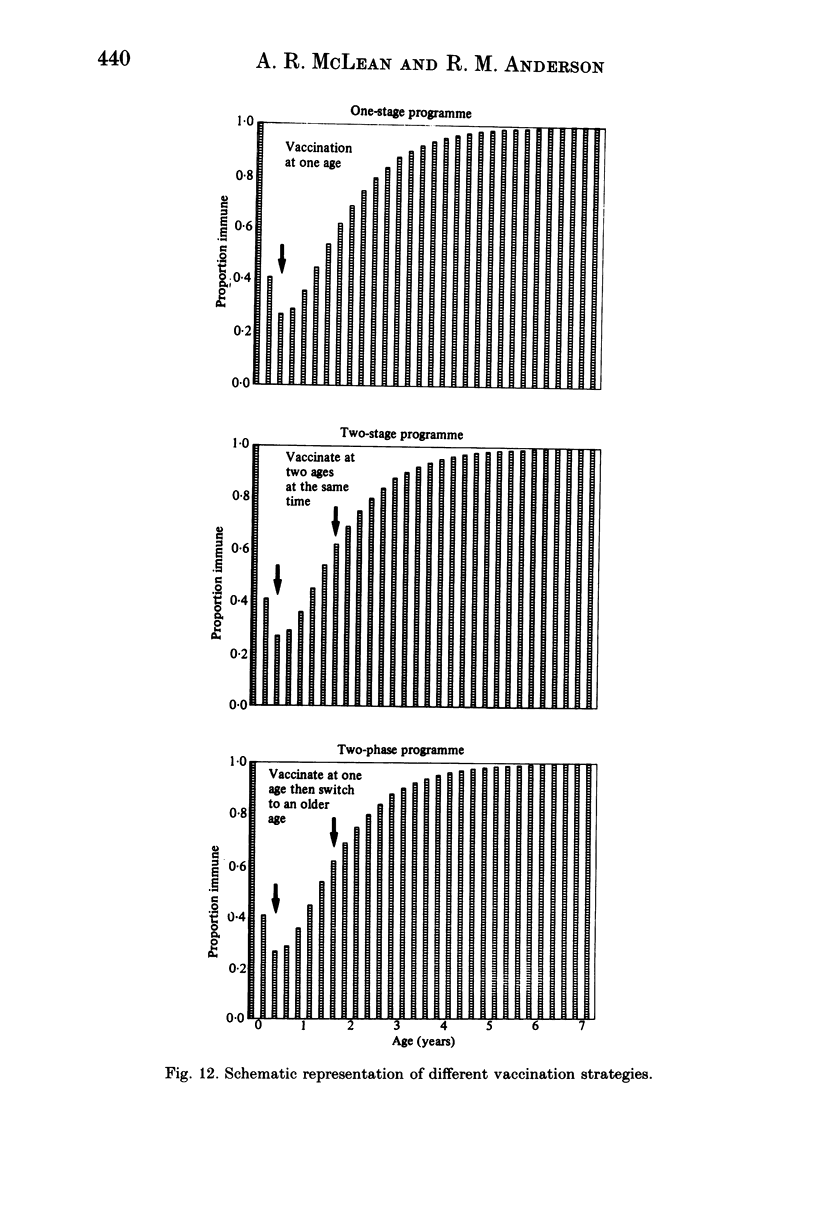
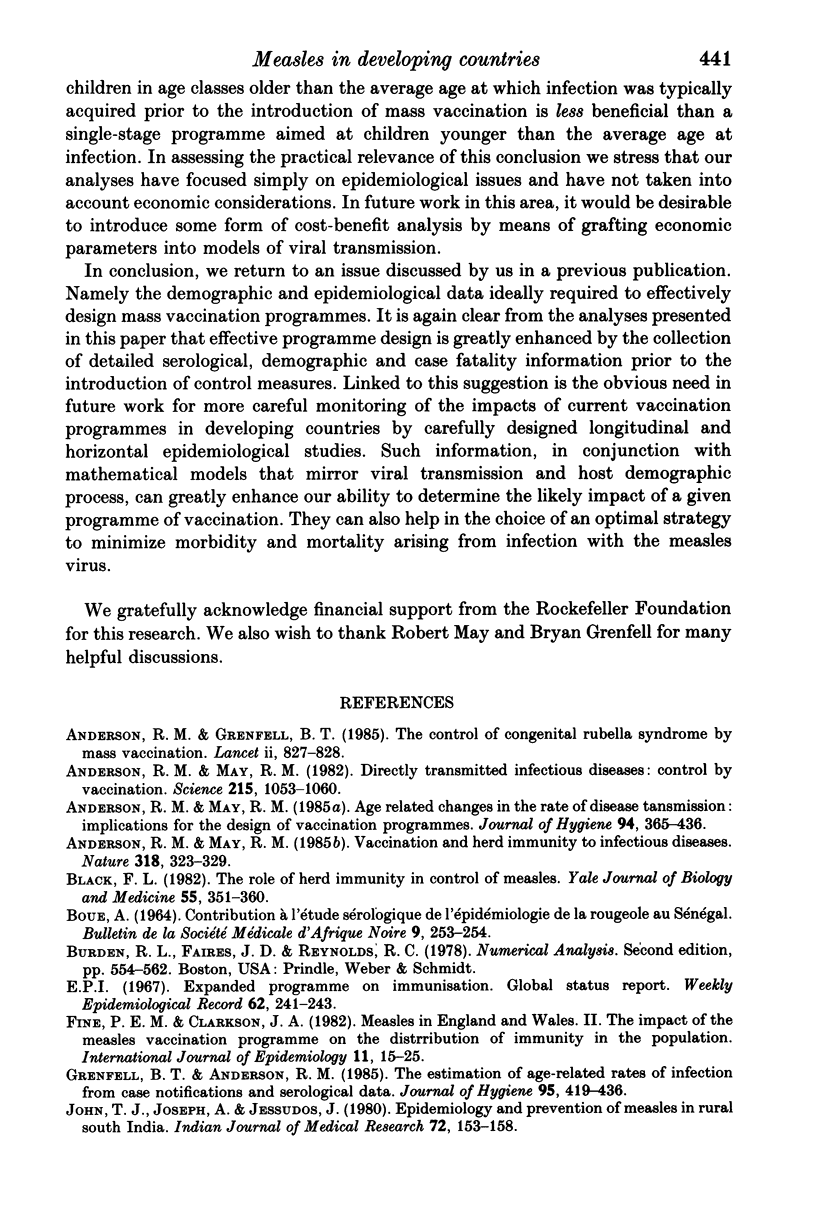

Selected References
These references are in PubMed. This may not be the complete list of references from this article.
- Anderson R. M., Grenfell B. T. Control of congenital rubella syndrome by mass vaccination. Lancet. 1985 Oct 12;2(8459):827–828. doi: 10.1016/s0140-6736(85)90809-8. [DOI] [PubMed] [Google Scholar]
- Anderson R. M., May R. M. Age-related changes in the rate of disease transmission: implications for the design of vaccination programmes. J Hyg (Lond) 1985 Jun;94(3):365–436. doi: 10.1017/s002217240006160x. [DOI] [PMC free article] [PubMed] [Google Scholar]
- Anderson R. M., May R. M. Directly transmitted infections diseases: control by vaccination. Science. 1982 Feb 26;215(4536):1053–1060. doi: 10.1126/science.7063839. [DOI] [PubMed] [Google Scholar]
- Anderson R. M., May R. M. Vaccination and herd immunity to infectious diseases. 1985 Nov 28-Dec 4Nature. 318(6044):323–329. doi: 10.1038/318323a0. [DOI] [PubMed] [Google Scholar]
- BOUE A. CONTRIBUTION 'A L''ETUDE S'EROLOGIQUE DE L''EPID'EMIOLOGIE DE LA ROUGEOLE AU S'EN'EGAL, (S'ERUMS PR'ELEV'ES EN 1957) Bull Soc Med Afr Noire Lang Fr. 1964;9:253–254. [PubMed] [Google Scholar]
- Black F. L. The role of herd immunity in control of measles. Yale J Biol Med. 1982 May-Aug;55(3-4):351–360. [PMC free article] [PubMed] [Google Scholar]
- Fine P. E., Clarkson J. A. Measles in England and Wales--II: The impact of the measles vaccination programme on the distribution of immunity in the population. Int J Epidemiol. 1982 Mar;11(1):15–25. doi: 10.1093/ije/11.1.15. [DOI] [PubMed] [Google Scholar]
- Grenfell B. T., Anderson R. M. The estimation of age-related rates of infection from case notifications and serological data. J Hyg (Lond) 1985 Oct;95(2):419–436. doi: 10.1017/s0022172400062859. [DOI] [PMC free article] [PubMed] [Google Scholar]
- John T. J., Joseph A., George T. I., Radhakrishnan J., Singh R. P., George K. Epidemiology and prevention of measles in rural south India. Indian J Med Res. 1980 Aug;72:153–158. [PubMed] [Google Scholar]
- MILLER D. L. FREQUENCY OF COMPLICATIONS OF MEASLES, 1963. REPORT ON A NATIONAL INQUIRY BY THE PUBLIC HEALTH LABORATORY SERVICE IN COLLABORATION WITH THE SOCIETY OF MEDICAL OFFICERS OF HEALTH. Br Med J. 1964 Jul 11;2(5401):75–78. doi: 10.1136/bmj.2.5401.75. [DOI] [PMC free article] [PubMed] [Google Scholar]
- Peltola H., Karanko V., Kurki T., Hukkanen V., Virtanen M., Penttinen K., Nissinen M., Heinonen O. P. Rapid effect on endemic measles, mumps, and rubella of nationwide vaccination programme in Finland. Lancet. 1986 Jan 18;1(8473):137–139. doi: 10.1016/s0140-6736(86)92270-1. [DOI] [PubMed] [Google Scholar]
- Ueda S., Okuno Y., Sangkawibha N., Jayavasu J., Tuchinda P. Studies on measles in Thailand. 1. Seroepidemiological examination. Biken J. 1967 Sep;10(3):129–133. [PubMed] [Google Scholar]
- Walsh J. A. Selective primary health care: strategies for control of disease in the developing world. IV. Measles. Rev Infect Dis. 1983 Mar-Apr;5(2):330–340. doi: 10.1093/clinids/5.2.330. [DOI] [PubMed] [Google Scholar]
- Zhang Y., Su W. A review of the current impact of measles in the People's Republic of China. Rev Infect Dis. 1983 May-Jun;5(3):411–416. [PubMed] [Google Scholar]


